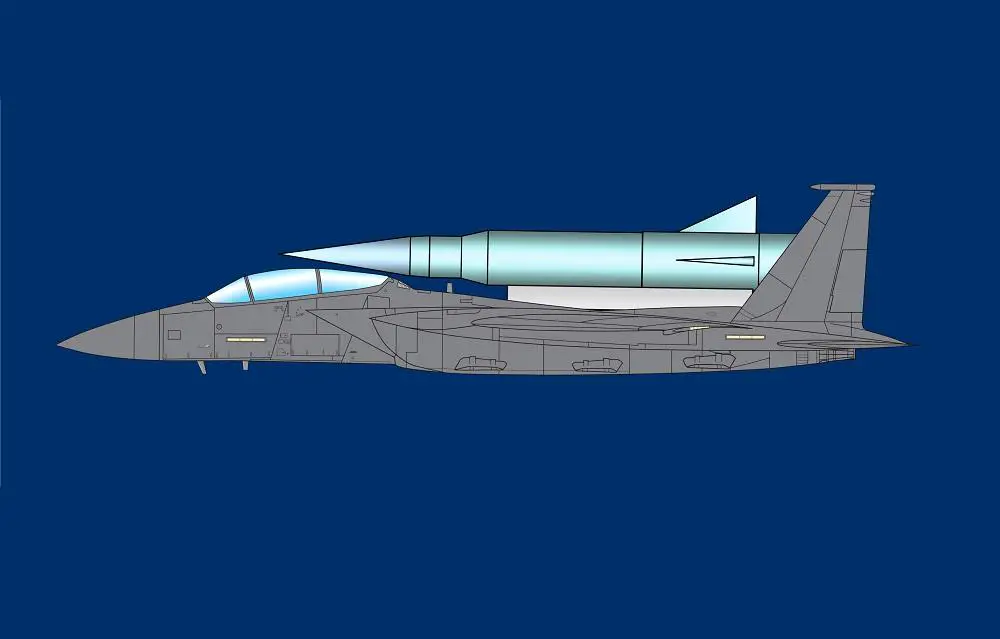The concept of air launching vehicles from carrier aircraft is a concept that has been around for decades. From launching small missiles, parasite fighter aircraft, or manned, hypersonic vehicles, air-launch is a proven technology. In the mid 1980’s, the U.S. Air Force tested the capability of air launching a multistage, anti-satellite ASM-135 missile from beneath an F-15 Eagle in a successful attempt to destroy an orbiting satellite. In 2006, Boeing proposed a similar concept for missile launch, this time using an unmanned variant of the F-15E Strike Eagle with the launch vehicle mounted dorsally instead of ventrally. Boeing designated this variant as the F-15 Global Strike Eagle (GSE). The concept proposed the F-15 GSE as a low-cost demonstration of global strike capability utilizing a variety of munitions including the little-known Common Aero Vehicle (CAV). Defined as a maneuverable, hypersonic reentry vehicle that has the capability of dispensing a variety of payloads inside the atmosphere, the CAV concept eventually merged with the Air Force/DARPA Falcon project. Providing a Low Earth Orbit (LEO) launch capability for micro satellites, or microsats, was another mission possibility for the F-15 GSE and, with future upgrades, delivering heavier ballistic and orbital payloads.

Initial studies using the more conventional method of a wing-mounted, or center-mounted payload limited the F-15E to approximately 220 pounds (100 kg) while controlling the diameter and length of the Launch Vehicle (LV). Moving the LV to the top of the F-15E allowed for greater flexibility and larger payload capacity. As proposed, the F-15E GSE required only minimal modifications to strengthen the upper fuselage structure for the top-mounted missile pylon, upgraded Pratt & Whitney F100-229 engines and lower aft canopy profile. For safety the Air Force would perform the air-launch mission unmanned, but the aircraft retained a manned capability for ferry missions. The F-15 GSE concept made use of off-the-shelf solid rocket motors (SRM), or government furnished SRM’s to reduce cost, time and complexity. Contained between the booster stages were the avionics control and communication packages, electro-mechanical actuation system, batteries, sure-separation system and flight termination system. Aerodynamic control surfaces added boost phase control and an aft cone fairing added to reduce drag during the F-15 boost phase which ejected shortly after LV separation.

The proposed launch vehicle consisted of off-the-shelf components such as the SR-19, Minutemen II second stage used as the first stage of the launch vehicle. The LV second stage would have used the Orion 50XL, while the third stage used the Orion 38, both from the Pegasus XL launch system. The large LV system would have impaired pilot ejection capability and therefore required an unmanned mission. Existing flight control software from the latest Unmanned Air Vehicle (UAV) systems would be used to allow unmanned operations. Benefits of the F-15 GSE system stated an operationally responsive space and munitions launch capability, low profile mission (looks like other F-15’s), low system development cost, mission flexibility by use of forward basing options and recall capability, and fully upgradable system capabilities. In the end, the Air Force chose not to pursue this unique air-launched concept, instead the service continues to rely on the use of the venerable Boeing B-52 Stratofortress and B-1B Lancer for near-term hypersonic vehicle air-launch capabilities.















